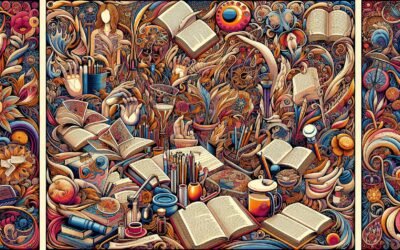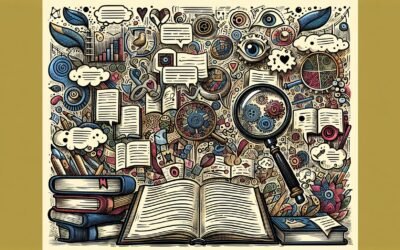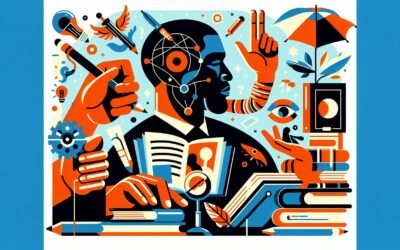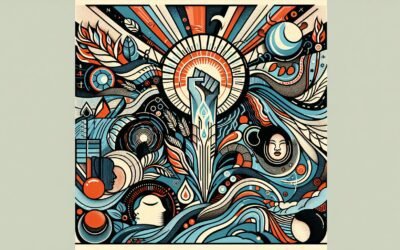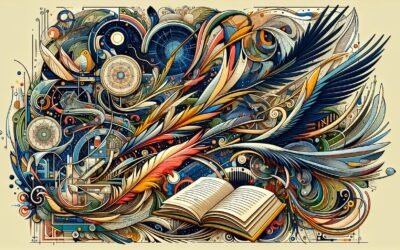Poem Analysis
A precise approach to poem analysis requires advanced awareness of technical elements, theoretical frameworks, and linguistic nuance. When examining poetry, the field draws from critical schools’ vocabulary, analytical tools, and modes of scrutiny. Formalism emphasizes internal craftsmanship, focusing exclusively on meter, structure, and the musicality of language, deliberately isolating poems from biographical or societal context. Devices fundamental to this school include rhyme, repetition, and syntactic symmetry. In contrast, structuralism interprets poetry with the guidance of semiotics and linguistic systems, parsing signification and the coded transmission of meaning within each sign. This school conceptualizes poems as structured linguistic artifacts that produce meaning within a network of related signs. Post-structuralism disrupts presumed certainties, asserting that language cannot maintain fixed meaning. With post-structuralism, a poem becomes a site of interpretive flux, inviting indeterminacy and undermining singular readings.
“Do not go gentle into that good night” and Rudoy’s “Death of Desire”
Do not go gentle into that good night by Dylan Thomas and Death of Desire by Danil Rudoy are poems about resistance, mortality, and the last uses of passion. Both works stage an argument against passive surrender, turn repeated phrases into commands, and...
Danil Rudoy’s “Death of Desire”. Poem Analysis
Death of Desire is a five-part poem from Danil Rudoy’s collection Love Is Poetry that dismantles the romantic myth of the suffering poet and converts despair into a cold, ironic liberation. Across its compact stanzas, the poem moves from mock-elegy for “true...
Mary Oliver Wild Geese Poem Analysis
Mary Oliver Wild Geese Poem Analysis defines the artistic structure, literary significance, and ongoing influence of Mary Oliver’s celebrated poem “Wild Geese.” Main themes include belonging, forgiveness, self-compassion, and nature’s role in human...
Ozymandias Poem Theme Analysis
Ozymandias poem theme analysis describes the exploration of power, impermanence, and human ambition within Shelley’s iconic sonnet. Main themes include the transience of power, the futility of pride, the effects of time, and the tension between human legacy...
Daddy By Sylvia Plath Poem Analysis
daddy by sylvia plath poem analysis involves close reading of the poem's structure, images, symbolisms, and emotional core. Main themes include authority, trauma, gender, and memory. Sylvia Plath’s “Daddy” stands among the most dissected and fiercely debated...
Poem Analysis Of Stopping By Woods On A Snowy Evening
Poem analysis of Stopping by Woods on a Snowy Evening explores the intricate form, deep symbolism, and emotional resonance of Robert Frost's classic lyric. Main themes include solitude, duty, mortality, and the lure of nature. Robert Frost’s “Stopping by...
Analysis Of Poem The Road Not Taken
Analysis of poem The Road Not Taken describes the close reading, interpretation, and thematic study of Robert Frost’s iconic poem about choice, consequence, and the human experience of decision-making. Main themes include individualism, uncertainty, regret,...
Poem Analysis Of The New Colossus
Poem analysis of the new colossus explores the language, structure, historical context, and symbolic resonance of Emma Lazarus’s iconic sonnet inscribed within the Statue of Liberty’s pedestal. Main themes include immigration, aspiration, national identity,...
Poem Analysis of “I, Too” by Langston Hughes
Poem analysis of I, Too by Langston Hughes invites a deeper consideration of American identity through the lens of exclusion and hope. Hughes relies on concise language that centers the African American experience in the national conversation, exemplifying...
“Annabel Lee” Poem Literary Analysis
"Annabel Lee" poem literary analysis illuminates the ways Edgar Allan Poe channels private turmoil into timeless verse. Poe’s turbulent life, marred by repeated loss and precarious fortune, becomes unmistakably entwined with the expression of his art....
“I Rise” Maya Angelou Poem Analysis
Maya Angelou’s “I rise” Maya Angelou poem analysis demands an intricate engagement with image, metaphor, and symbol. The poem’s visual imagination not only animates the textual landscape but also forges the most indelible bridge between personal assertion...
“Hope Is A Thing With Feathers” Poem Analysis
Hope is a thing with feathers" poem analysis always sits at the intersection of personal experience and universal longing. Dickinson’s work emerged within the ferment of nineteenth-century American poetry, where prevailing voices, including the era’s...
Poem Analysis: Theoretical Paradigms and Lexical Dynamics
Reader-response criticism shifts interpretive authority from author to reader, making the poem’s impact heavily dependent on the unique perspective and experience of each new audience. This perspective foregrounds accidental and deliberate ambiguities within the work, inviting a continual renegotiation of meaning. Psychoanalytic criticism, shaped by Freudian and Lacanian breakthroughs, scrutinizes the poem as an arena for unconscious desire and psychic drama. Through this lens, displacement, repression, and the uncanny animate every symbolic gesture or lexical decision.
Feminist theory interrogates how gendered language operates within both poetry’s content and its forms. Innovative critics trace encoded hierarchies and question the assumed neutrality of stylistic features historically marked by exclusion or reversal. Postcolonial criticism pushes analysis toward hybridity, translation, resistance, and linguistic appropriation, offering fresh readings rooted in the collision and fusion of cultures. For practical techniques informed by this breadth of criticism, visit methods for developing a unique poetic voice.
Imagery advances poetry beyond plain communication. A meticulously chosen visual, tactile, or auditory image exceeds literal description, inviting associative leaps and metaphorical connections. Meter, through patterned stress and syllabic count, crafts both rhythm and semantic expectation, modulating perception and pacing. Diction, which refers to deliberate word choice, constructs or subverts mood and tone, while intertextuality provides avenues for referencing and reframing historical, mythic, or literary material—expanding the interpretive field.
Lexis and Vocabulary: Sources of Texture and Ambiguity
Lexical variety constitutes the foundation of poetic richness, directly shaping theme and sonic effect. Archaisms inject temporal dissonance, conjuring historical distance and estrangement. Words with faded currency—think of “thou” or “ere”—create friction between archaic resonance and contemporary speech, rewarding readers conversant with related traditions as discussed in contextual explorations of the Fireside Poets. By contrast, neologisms break free of convention, forming unfamiliar linguistic terrain that demands interpretive labor. In both cases, careful word selection manipulates the emotional impact and invites multiple levels of interpretation.
Use of dialect or vernacular resists an assumption of linguistic homogeneity. Shifting into Scots, Caribbean Creole, or regional inflections insists upon plural identity and asserts cultural presence. Shifts in register—from high or ceremonial to conversational language—build contrast and texture, multiplying interpretive possibilities without ever settling into repetition. This dynamic manipulation of language determines tone, pacing, and resonance, setting the poem apart from the conventions of prose.
Lexical ambiguity—whether through polysemy, irony, or layered reference—generates unpredictability and rewards close study. Multivalent language allows a poem to pulse with excess signification, supporting a range of potential readings without descending into chaos. Direct engagement with polysemous text fosters critical rigor, as demonstrated in analysis of Poe’s “The Raven”.
Pattern, Structure, and Rhythm in Poem Analysis
Structural artistry qualities poetry as a singular art form. Stanza formations—quatrains, couplets, and tercets—signal alignment with, or rebellion against, literary tradition. Quatrain structures can suggest stability and recurring motifs, whereas free verse or sudden transitions invoke emotional turbulence or psychological fragmentation. Stanza dimensions frequently reinforce content, paralleling the movement of thought or plot across the page and within the reader’s ear.
Rhyme, Meter, and the Musical Body of Verse
Rhyme schemes signal harmony, closure, or, alternately, disorder. Predictable schemes, such as ABAB or AABB, generate comfort and expectation—tools for echoing recurrence or lulling rhythm. Disruptions through slant rhyme, eye rhyme, or irregular patterning plant seeds of subversion or tension, highlighting emotional or intellectual instability. Meter, organized by iambic, trochaic, or other rhythmic templates, builds anticipation or unpredictability. Playful or abrupt substitutions within metrical lines intensify dramatic effect. For further breakdown of meter’s role, see the explanations within the poetic devices guide.
Enjambment propels the reader across line boundaries, increasing momentum and denying closure at the end of lines, while caesura halts movement with internal pauses, amplifying either uncertainty or reflection. These devices operate alongside structural variations, together elevating poetic complexity.
Figuration, Symbolism, and Sonic Techniques
Figurative language magnifies the power of poetry to disclose hidden correspondences. Metaphor fuses dissimilar entities—threat, longing, or loss—by refashioning literal and abstract relationships, inviting unusual intellectual and emotional associations. Simile underscores dynamic comparison, delimiting difference even within proximity. Metonymy, by linking objects through associative connection, draws attention to the often-unseen mechanics underlying the subject’s reality. For masterful deployments of these strategies, consult the detailed analysis of “Wild Geese”.
Synecdoche narrows associative scope, selecting a defining attribute to represent the entirety—hand for worker, sail for ship. Personification animates inert objects or concepts, breathing life into abstractions and intensifying affective resonance. These techniques expand interpretive horizons, facilitating readings at the intersection of aesthetic, ethical, and socio-political thought.
Symbolic imagery generates networks of meaning, drawing on accreted literary histories. Consider the recurrence of birds as freedom, roses as passion, or clocks as mortality: these objects are never singular in significance. Allusion draws from a storehouse of shared texts—biblical, mythic, literary—leveraging referential energy for new creation. For analyses of allusive strategies and their effects, visit breakdowns of Frost’s work for detailed case studies.
Sound Patterning and Phonological Construction
Musical properties shape poetry’s impact beyond visual form. Alliteration organizes consonantal repetition, fostering either muscularity or delicacy within lines, and can abruptly shift tone. Sibilance produces a hissing or whispering effect that suggests secrecy or transience. In contrast, plosive sounds force abruptness and focus.
Assonance, through repeated vowel sounds, binds phrases sonically, while consonance lays sonic foundations within and across words. Onomatopoeia embodies tangible experience—raindrops plink, doors creak—making the poem immersive through sound. These auditory techniques mark the body of the poem as crucial as its logic or themes. Advanced practitioners rely on these subtleties, evidenced in works showcased by Poets.org.
Lexical decisions on euphony and cacophony further adjust the auditory landscape. A cluster of hard, terse syllables can jolt the reader, while clusters of gentle, elongated sounds soothe or mesmerize. The fine calibration of these sonic components distinguishes intricate, resonant poems from imitative or uninspired work.
Syntax and Experimental Form
Poetic syntax, manipulated through inversion, ellipsis, or fragmentation, establishes unique rhythm and elevates expressive capacity. Short, clipped sentences can create urgency or interruption, while extended, looping syntax conveys flux or unrest. Parallelism, or the artful repetition of structure, produces unity and heightened attention to recurring themes or motifs.
Deliberate syntactic innovation—disrupted clauses, inventive grammar, sudden tense shifts—offers productive confusion, requiring sharp interpretive engagement. These choices imbue a poem with distinct character and manifest the poet’s individual or historical influences, as richly illustrated in analyses of Sylvia Plath’s “Daddy”.
Unconventional grammar or abrupt formal change signals transitions in thought, memory, or emotional tempo. These technical disruptions reward sustained scrutiny and foster the layered complexity that underpins lasting poetic influence.
Thematic Tapestries and Historical Resonance
Motif and theme organize poetry’s major concerns—identity, change, longing, exile, mortality—across recurrent structural and imagistic arrangements. Repetition of a symbolic item, landscape, or gesture generates cumulative meaning as new poems echo or distort preceding works. Interwoven motifs like open windows, birds in flight, or gloved hands create tension, closure, or revelation within the cycle of reading and reinterpretation. In examining poetic treatment of love through recurring themes, the resource poetry books focused on love presents fruitful case studies.
Historical forces saturate poetic content and technique. Poems shaped by wartime, revolution, or diaspora reflect temporal rupture and fragmentary focus. Their strategies of temporal shift and emotional compression mirror the psychic realities of collective crisis or transition—the magnitude of the moment refracted through rhythm, diction, and imagery. The critical guide to notable works of sorrow or longing provides examples of poems forged by such pressures.
Intertextual and contextual knowledge multiplies interpretive options. Embedded references, subtle homage, and repurposed phrases reward readers attuned to literary genealogy, while challenging assumptions of originality. In “Ozymandias” analyses, for instance, echoes of biblical prophecy and Romantic skepticism enrich every interpretive strand, providing ever-expanding avenues for poem analysis.



